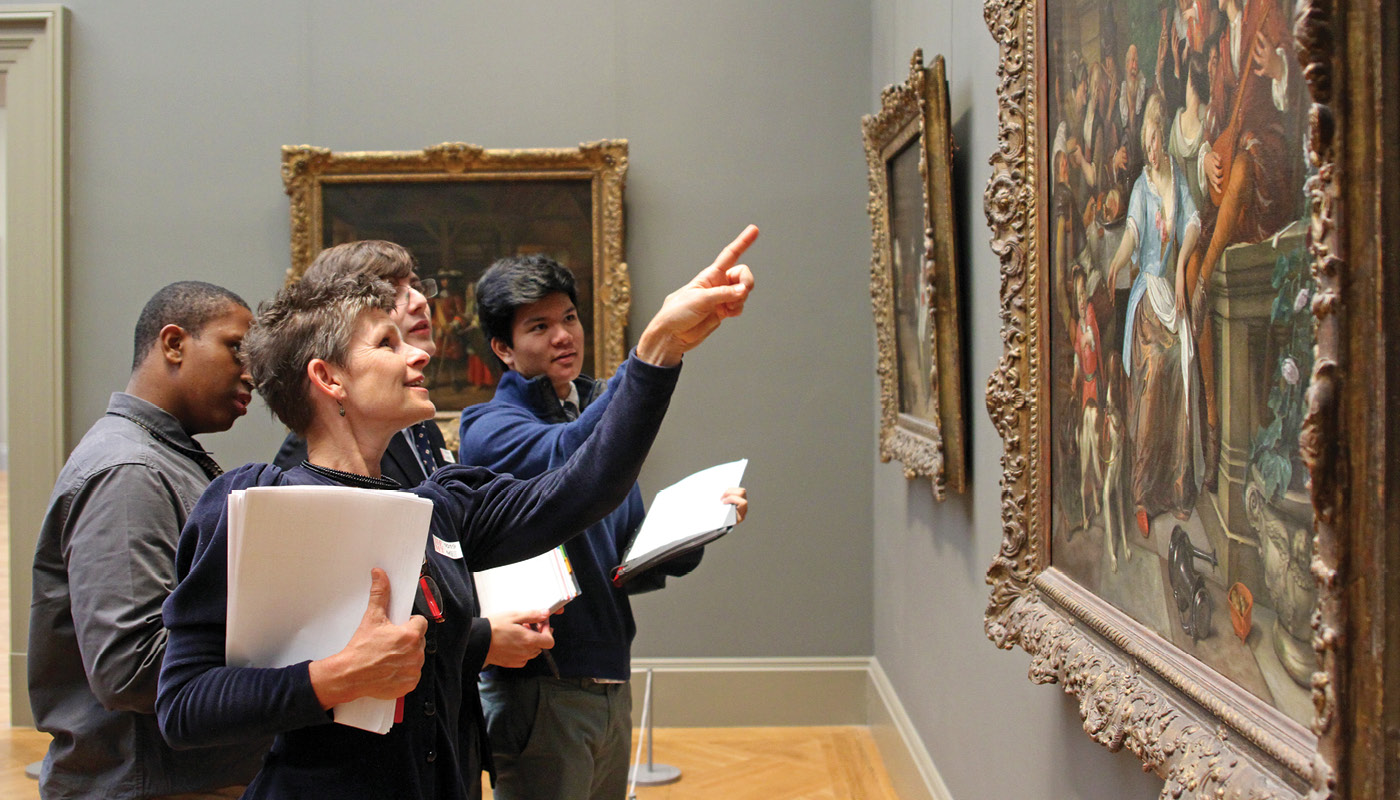Morning at the Met
Like most high school students, Regians sometimes itch for the chance to wander freely on foot and make a discovery all their own. Unlike most others, however, students at Regis can escape into the Dutch countryside of the 17th century or hide among the shadows of the ancient Egyptian Temple of Dendur. They can even do it with a teacher’s permission—so long as they don’t make any detours on the impossibly short walk to the Metropolitan Museum of Art.
“Regis owes its Foundress and Fr. Hearn a great big thank you,” maintains Regis art history teacher Karin Miller-Lewis. While few Regians need this reminder, they might not always think to include the school’s location, right next to what would only later become known as Museum Mile, among their thank-you’s. “What foresight!”
Miller-Lewis recently led a group of juniors on a morning visit to the Met, substituting the “middling quality reproduction on a classroom screen” with the “drama of seeing a painting in person.” Each section of her junior Fine Arts course, which she calls “Long Story Short: 14 Episodes in the History of European Art,” can anticipate at least two such trips in a trimester. On this particular visit, the class sought to better understand the ways 17th century Dutch painting answered Miller-Lewis’s question: “What do you get when you cross a republic with capitalism and art?”
One morning at the museum can often provide students with a more vivid sense of that answer than several weeks of reading or long research papers. In the age of digital mass media, access to visual culture has never been easier, but seeing isn’t always understanding.
“We are an image-saturated culture. And most of those images come to us as reproductions,” said Miller-Lewis.
“On the one hand, the guys are familiar with reading and responding to paintings as images. But paintings are handmade things.”
It’s the physicality of this experience, she thinks, that really entrances the students. Out of the confines of a classroom, each can peruse at his own pace.
“They like to be on their feet; to approach so close that a painting’s characters seem like they’re just on the other side of the frame,” Miller-Lewis explains. She adds that it is also important to consider the space when choosing a collection to visit. “You need to know your students to maximize the learning!”
A variety of Regis courses today take advantage of the chance to travel across continents and centuries only a subway stop or two away. But for Miller-Lewis, “it is not just about the distant past.”
Affected by the presence of a moving yet mysteriously foreign object, Regians “explore the meaning of these works for us today, as individuals.” As these increasingly regular trips start to become a tradition, perhaps memories of the Met will link today’s Regians with the future as well.
Read more Regis news
